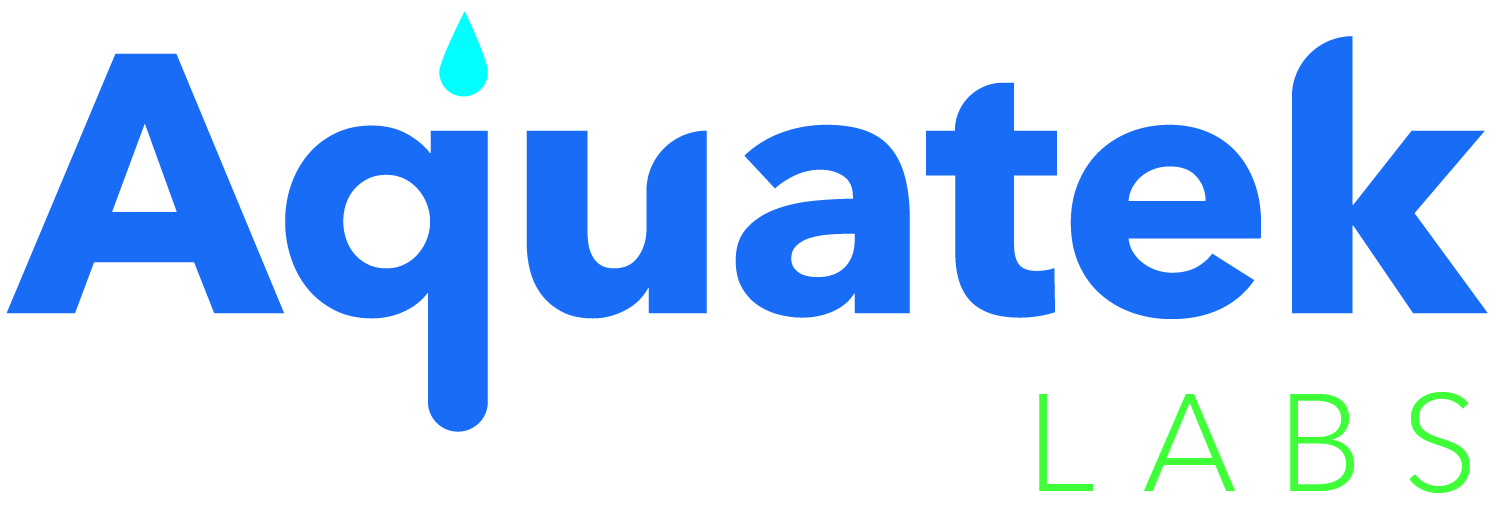FREQUENTLY ASKED WATER QUESTIONS ?
is there a standard test for drinking water?
Our Standard Profile is designed to provide a water test that quickly and accurately determines the general quality of the water you drink. The Profile also tests for newly emerging health concerns including arsenic, uranium, lead, and radon in water. This test meets the needs of both homeowners and professionals and can be used anywhere that a general water testing is required. The following analytes are included in the test.
- Total Coliform
- E. coli
- Total Residual Chlorine
- pH
- Turbidity
- Color
- Odor
- Fluoride
- Chloride
- Nitrate
- Nitrite
- Sulfate
- Hardness
- Calcium
- Magnesium
- Sodium
- Copper
- Iron
- Manganese
is aquatek labs state certified?
We are certified in CT, RI, MA & NY for environmental testing.
how will i receive my test results?
Results are generally available in 2-3 business days. We send most reports to customers by email. Postal service is also available.
how often should i test my well?
The E.P.A. recommends that home owners have their well water tested annually. Testing is also recommended for water that develops a noticeable change in color, odor, or taste.
does aquatek labs sell treatment systems?
No! Aquatek Labs is solely an analytical laboratory. In order to maintain our independence and objectivity we do not sell any type of treatment or mitigation systems.
can i use my own bottles to collect a water sample?
No. Our bottles are sterilized and come in different sizes depending on the tests being performed.
FREQUENTLY ASKED RADON QUESTIONS ?
where should radon in air test kits be placed during testing?
Radon measurement devices should be placed in the lowest lived-in area of the house. Closed house conditions should be in place 12 hours prior to the radon test.
what is a safe level of radon in air?
Radon in air levels for housing transactions are considered acceptable when the radon concentration is below 4.0 pCi/L. However, there is no safe level of radon and a concentrations less than 2.0 pCi/L is desirable.
is aquatek labs certified to test for radon?
Aquatek is certified by both the National Radon Safety Board (N.R.S.B.) and the National Radon Proficiency Program (N.R.P.P.).
how will i receive my test results?
Results are generally available in 1-3 business days. We send all reports to customers by email. Postal service is also available.
how often should i test for radon in air?
Radon tests are required for most property sales and transactions. Buildings that are slightly over or under the radon cutoff level of 4 pCi/L should be tested annually to check for changes in the buildings radon level. Buildings with radon mitigation systems should also be screened annually to make sure that the system is working properly.
how do i test for radon?
We sell kits for testing both radon in air and radon in water. Radon testing is as simple as stopping by one of our three locations to pick up a radon testing kit or calling for a kit by mail. You can then expose the kit in your house and return it for analysis.
does aquatek labs sell radon mitigation systems?
No! Aquatek Labs is solely a testing company. We give test results that are independent of companies that sell and install mitigation systems?
do radon levels fluctuate over time?
Yes, radon levels can change due to seasonal temperatures, low pressure storms, changes in the geology below buildings and open house conditions?
can i smell radon?
Radon is a gas that you cannot smell, see or taste. The only way to determine if a building has high radon levels is through the use of a radon measurement device?

